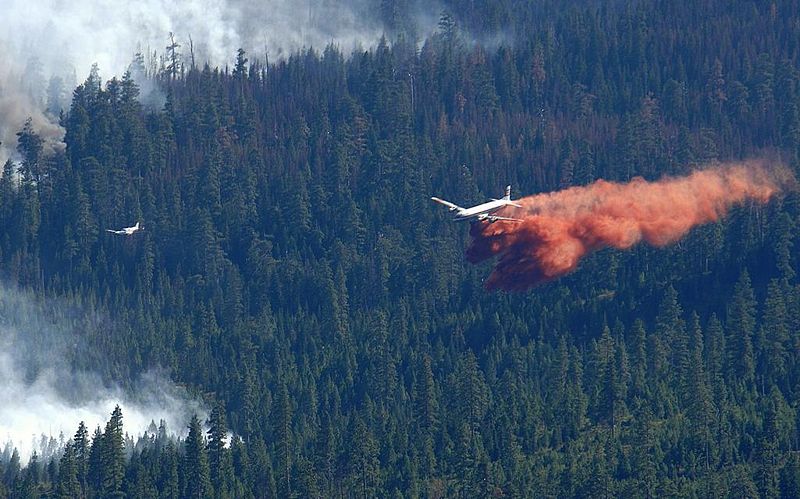Meteor shower grounds Springer fire air support

A possible fireball or meteor shower grounded planes fighting the Springer fire near Lake George in the Pike National Forest, Colorado. A Pueblo air-dispatch center began receiving reports of “balls of fire or something in the air” at 2:37 p.m. local time on Wednesday, June 20.
The planes were near Lake George when a pilot noticed debris falling from the sky, said Ron Roth, spokesman for the Rocky Mountain Area Coordination Center. The pilots were not sure whether it was “space junk” or a meteor, officials grounded flights to make sure no aircraft were hit, Roth said. Planes were allowed to resume flights about 90 minutes later.
The incident near the fire was first reported near Badger Mountain, a 11,294-foot peak in Park County along U.S. 24, about 65 km (40 miles) west of Colorado Springs.
The North American Aerospace Defense Command based at Peterson Air Force Base in El Paso County doesn’t think whatever fell was man-made, which they would be tasked with identifying.
“We have no indication anything manmade entered that area.” said NORAD spokesman John Cornelia, adding, “We have no information as to what this might have been.”
While a meteor in a wildfire zone is unusual, meteors visible from the high plain over Colorado are common.
Almost 400 firefighters on the ground are battling the Springer fire, currently at, 1,145 acres and 23 percent contained.
Sources: denverpost.com, gazette.com
Featured image: Dc7 – U.S. Forest Service photo by Thomas Iraci

[…] Meteor shower grounds Springer fire air support […]
[…] Source […]
As we approach the so-called “Galactic Alignment” our solar system will be moving into a region of space in which most of the galaxy’s matter exists and is in motion. We can expect more matter to enter the Earth’s atmosphere in the coming months; much, much more.
[…] fireballs were reported. Could the Zetas tell us if this is indeed tail wafting? [and from another] https://watchers.news/2012/06/21/meteor-shower-grounds-springer-fire-air-support/ A Pueblo air-dispatch center began receiving reports of “balls of fire or something in the air” […]
As though meteor showers are exempt from fire zones based on this remark:
“While a meteor in a wildfire zone is unusual, meteors visible from the high plain over Colorado are common.”
People have it in their minds that meteor showers are visible only in the night time skies or at least best seen during dark hours, which is true. However, meteor showers during the day are much more difficult to see unless given coordinates to track an announced shower e.g., the stars are still there during daylight hours and one can track them with set coordinates and actually see them with the right equipment.
Planet Earth is being bombarded 24/7 with space debris and it is my belief that these meteor showers are becoming more prominent as our solar system travels through regions of space as they intensify. These showers will put on a beautiful light show that has never been experienced by humans at any age in history.
The time will come when these shower will become life threatening . . . read for yourself.
https://en.wikipedia.org/wiki/Carolina_Bay
In this wiki article it is claimed that no meteors were discovered in and around the elliptical impact bodies of water and land, but meteors have been known to create depressions by explosions (Tunguska Event) above the land leaving behind craters. Other planets in our solar system have similar craters that are elliptical in shape as well.
Use Google (The Carolina Bays) images to get a better perspective on these impact craters.
https://en.wikipedia.org/wiki/Tunguska_event
[…] Meteor shower grounds Springer fire air support […]